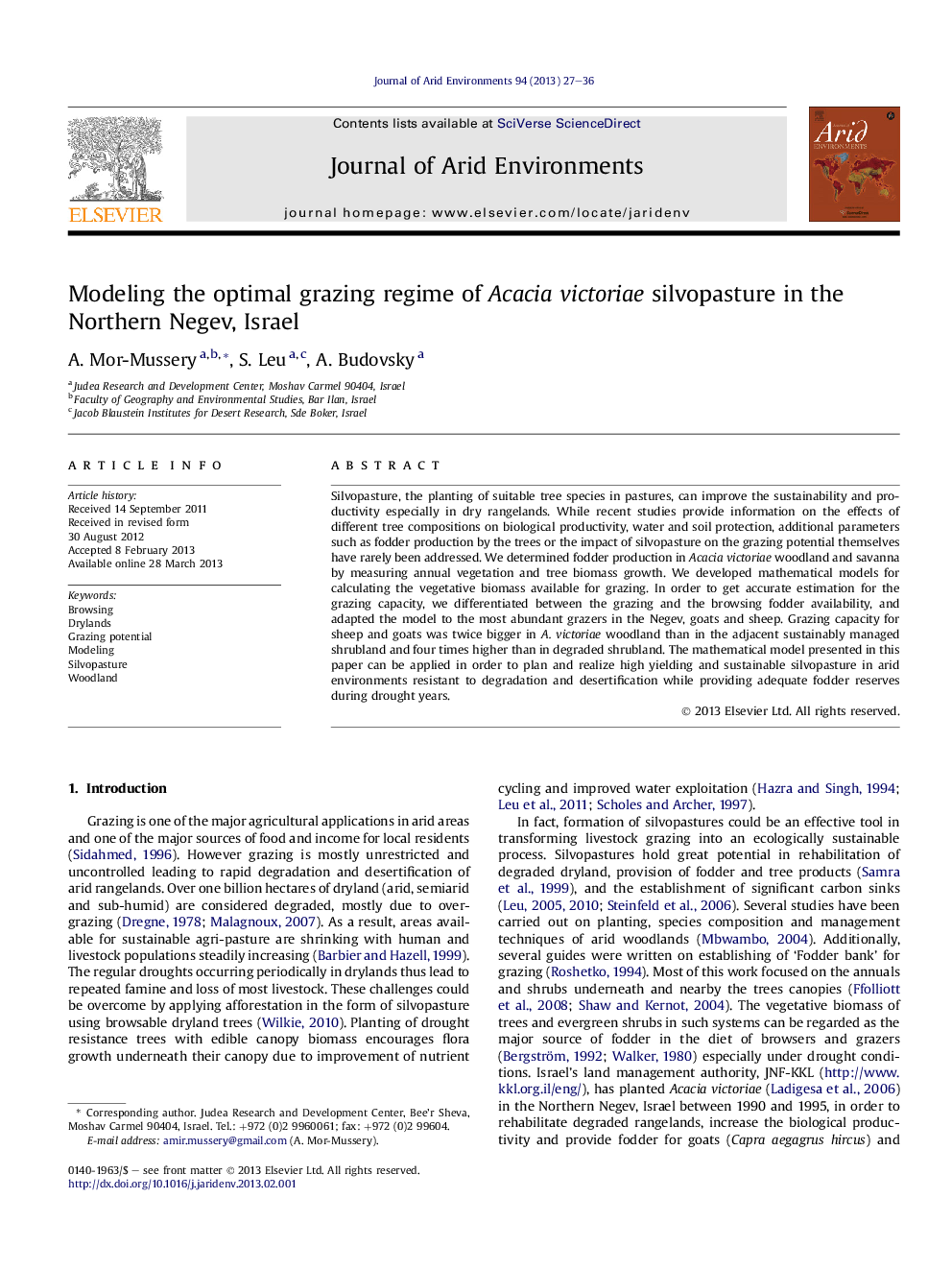| Article ID | Journal | Published Year | Pages | File Type |
|---|---|---|---|---|
| 4393167 | Journal of Arid Environments | 2013 | 10 Pages |
Silvopasture, the planting of suitable tree species in pastures, can improve the sustainability and productivity especially in dry rangelands. While recent studies provide information on the effects of different tree compositions on biological productivity, water and soil protection, additional parameters such as fodder production by the trees or the impact of silvopasture on the grazing potential themselves have rarely been addressed. We determined fodder production in Acacia victoriae woodland and savanna by measuring annual vegetation and tree biomass growth. We developed mathematical models for calculating the vegetative biomass available for grazing. In order to get accurate estimation for the grazing capacity, we differentiated between the grazing and the browsing fodder availability, and adapted the model to the most abundant grazers in the Negev, goats and sheep. Grazing capacity for sheep and goats was twice bigger in A. victoriae woodland than in the adjacent sustainably managed shrubland and four times higher than in degraded shrubland. The mathematical model presented in this paper can be applied in order to plan and realize high yielding and sustainable silvopasture in arid environments resistant to degradation and desertification while providing adequate fodder reserves during drought years.
► Acacia victoriae woodland has available biomass for browsing more than twice from shrubland. ► A. victoriae woodland density affect the biomass available for browsing and grazing. ► A. victoriae woodland has available biomass for grazing twice higher than shrubland. ► A. victoriae has high partial primary production as compare to other arid species. ► We implemented mathematical model that enable to evaluate browsing suitability of trees.
